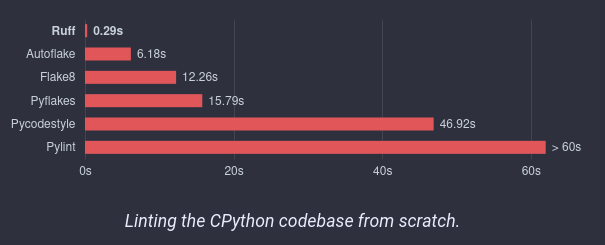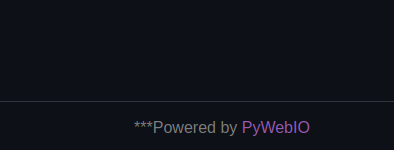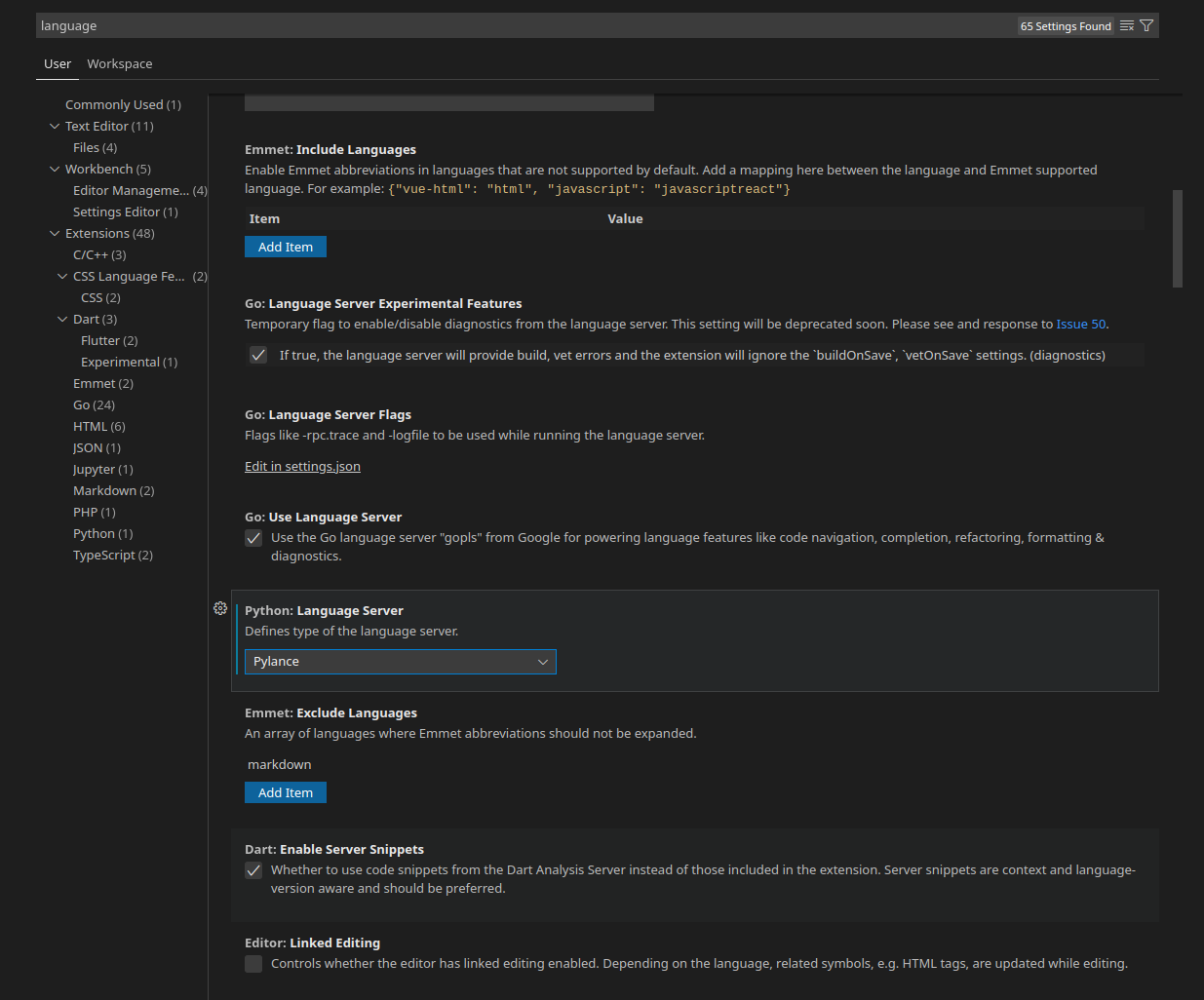Ruff - Linting
Python3
1
Beiträge
1
Kommentatoren
135
Aufrufe
-
An extremely fast Python linter, written in Rust.
Den habe ich mal eben in meiner IDE PyCharm ausprobiert. Der ist wirklich so schnell, wie er behauptet.
Astra Kernel :verified: (@AstraKernel@infosec.exchange)
🦀 🐍 An extremely fast Python linter,written in Rust https://beta.ruff.rs/docs/ 🐍 Installable via pip 📦 Built-in caching, to avoid re-analyzing unchanged files 🔧 Autofix support, for automatic error correction (e.g., automatically remove unused imports) 🤝 Python 3.11 compatibility ⚖️ Near-parity with the built-in Flake8 rule set 🔌 Native re-implementations of dozens of Flake8 plugins, like flake8-bugbear ⌨️ First-party editor integrations for VS Code and more #rustlang #python

Infosec Exchange (infosec.exchange)

Bildquelle: https://beta.ruff.rs/docs/

